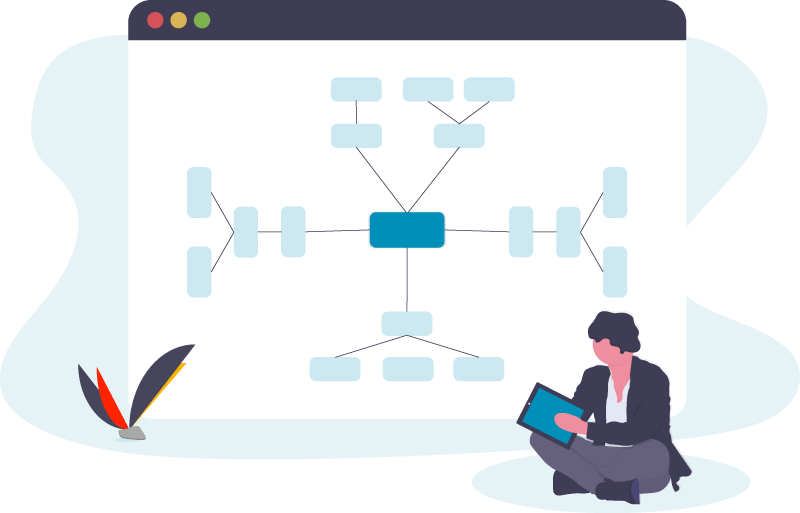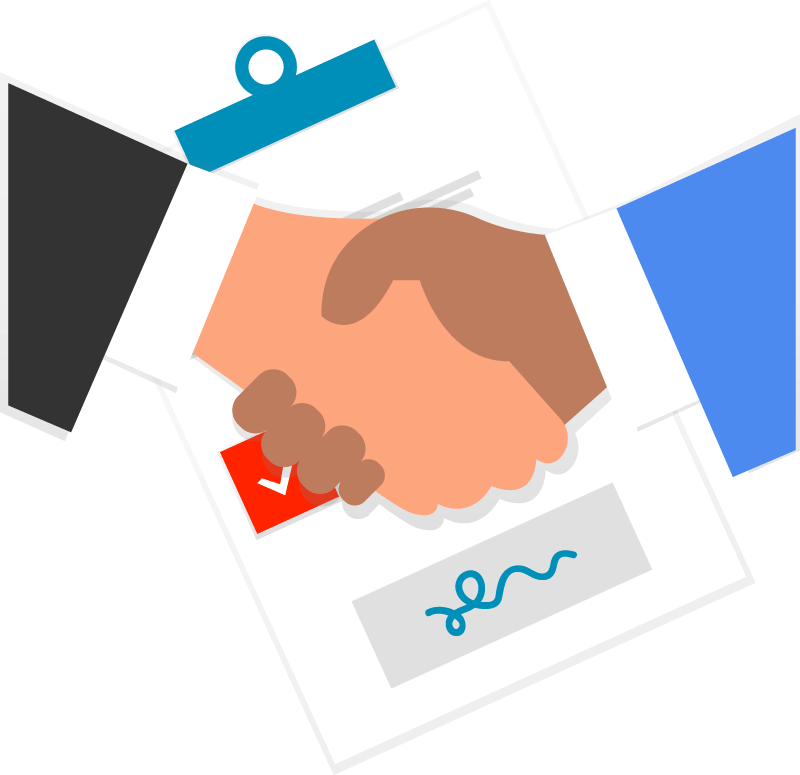Start Planning your Creative Startup Today!
There are a lot of reasons you want to start your own business. I will help guide you through the process and share with you my own experiences to help figure out what works best for you!
Read below to see a step-by-step guide to help you plan your business!
Creating your startup

Why you should start a business
If you are a creative, at some point you have heard someone mention being a “starving artist.” While it is true, the arts might not be as valued in today’s society, it is the opposite for creativity. We are in a golden age where creative endeavors are at the forefront of in-demand skills. As an artist, you have a natural inclination for creativity, problem solving, and communication.
All of these skills are in demand and are perfect for creating your own business. By leveraging your natural creative skills, you are primed for entrepreneurship and creating your own business. Doing this will allow you creative freedom in a booming market and allow you to break that “starving artist” stigma!

How to come up with an idea
Part of being a Creative is having the ability to problem solve. Whenever you design a flyer or poster, you are essentially solving a communication problem by delivering a message to the masses.
Creatives are natural problem solvers, and so are entrepreneurs. Entrepreneurs come up with an idea to solve a problem that people need. As a Creative Entrepreneur, you can come up with ideas that utilize your talents to solve problems that people need help with.
Often times, people need help getting their message out and that is where Creatives come in. Whether it is creating a website for a small hometown business or creating a flyer for a grand opening, Creatives can help people get their message out.
What creative skills do you have that can help people around you? Are you a video editor/creator, writer, photographer, or designer? You can help people start their business as you create your own.
Types of business models and the one I use
When creating a business to solve a problem, you have two options. You either create a product to solve a problem or you offer a service to solve their problem. We will dive deeper into these two categories of business to see what options you have available to you.

Product Based Businesses
A product based business is all based off of selling a product. This product can be either digital or physical. There are benefits to both, but digital products are easier to start with. Whether they are downloadable products on your website or soemthing like music.

Service Based Businesses
A service based business is all about trading your time to offer someone a service they need. This can be a lot of different things, whether you are a graphic designer and can provide design services for someone or a writer and can help someone with their content writing.
The business model I use: a combination
So I like to use a combination method, and I often encourage you to try this as well, but there is a catch. The catch is, when you are first starting, you need to pick and focus on that model then expand into the the other. So if you are a writer, you could offer services to create written content for people. After you have some practice writing, you can then write a book or ebook to start selling.
No matter what your business model is, the key to success is to provide value to your customers.
Developing an Idea into a plan
Figuring out where to start planning your creative startup can be a daunting and overwhelming task. But don’t freak out! I have laid out the steps you need to think about when planning your business to help you make sure your idea will not only be a hit with your target customers, but also give you a clear instructions on the steps you need to follow to bring your startup to launch! Read below to get an overview of the steps you will be taking!

The Business Model Canvas
One concept a lot of entrepreneurs are familiar with (or should be anyway) is the business model canvas. This is a worksheet where your ideas are all written down in one spot to help you visualize how you are going to start your business. While the points in the canvas itself are good, the layout is not very user-friendly and can be confusing without being introduced to the terminology.
Keep reading to get an overview of the Creative Business Model Canvas!

Value Proposition
If you are a creative, at some point you have heard someone mention being a “starving artist.” While it is true, the arts might not be as valued in today’s society, it is the opposite for creativity. We are in a golden age where creative endeavors are at the forefront of in-demand skills. As an artist, you have a natural inclination for creativity, problem solving, and communication.
All of these skills are in demand and are perfect for creating your own business. By leveraging your natural creative skills, you are primed for entrepreneurship and creating your own business. Doing this will allow you creative freedom in a booming market and allow you to break that “starving artist” stigma!

Customer Relationships
This section is all about figuring out how you are going to interact with your potential customers. How are you going to reach your audience and stay connected with them? Are you going to optimize on social media or are you going to network face to face or over the phone? How can you improve your customers’ lives? Who is your customer?
These are all questions you need to figure out how to answer and that’s where this portion of the canvas helps you figure out the answers to these questions.

Key Activities
This section is both extremely simple and difficult at the same time. It is simple because you just have to answer 1 question: What do you need to do to get your business up and running? However, becomes difficult because there is a lot you need to get done, and that spawns more questions. Don’t worry though, I have already laid out the foundation for your through this website to figure out what you need to get done.
This includes:
- Getting registered with a tax ID and business license (if U.S. based)
- Getting online
- Develop your product/service
- Figure out marketing strategy
- A lot more!

Key Resources
To get your business off the ground, you need to figure out what resources you need to make it happen. For some, this is money or capital, but you won’t need a lot of that to get started for your creative startup. All you need is creative software, like Adobe CC (affiliate link), a computer to run it on, and clients. That is all you need to get started, but then you will want to expand to social media and email. You need to figure out what you need to get started and how to grow for the next 6 months, 1 year, and 5 years!

Channels
Channels simply mean, how are you going to get out in front of your audience. We have touched on this before with social media or emails, but this section allows you to dive down into more detail. For example, if you say social media, which platforms are you going to use? What type of content are you going to put out? How often are you going to post? This section helps you figure out a game plan to start getting your product or service in front of your audience.

Customer Segments
As your business grows, you will see that your customers will have different needs that you can help with. This is where customer segments comes in. Your product or service might have a variety of uses but those uses might not be applicable to everyone. If your product can help with social media and emial marketing, some people might need only the social media aspect while others need the email. By differentiating betweent the two, you can target to your customer’s unique needs and be able to provide the ultimate value and customer service.

Key Partners
No matter what your business model, you will need partners to help you be successful. This can range from a variety of things, whether its another creative to help you keep up with the workload or an accountant to help you keep track of the financials. No matter how much you are used to working alone, no one can do it by themselves so its essential to have partners you can trust and rely on.

Cost Structure
The cost structure is pretty self-explanatory. This is how you figure out how much your business is going to cost to run. By figuring out how much you need to spend, also known as accounts payable, you can figure out how much you need to make to be profitable. Some potential expenses can include the cost of web hosting, marketing expenses if you need new hardware like a computer to actually do your work on.

Revenue Stream
Where cost structure helps you figure out the money-out side of the equation, the revenue stream helps you figure out the income, or accounts receivable portion of the business model. No business can stay in business if you’re not making enough money, so this portion helps you figure out where you can make money and how you are actually going to get paid, whether it’s cash, card or PayPal!
